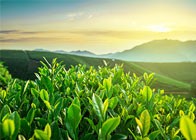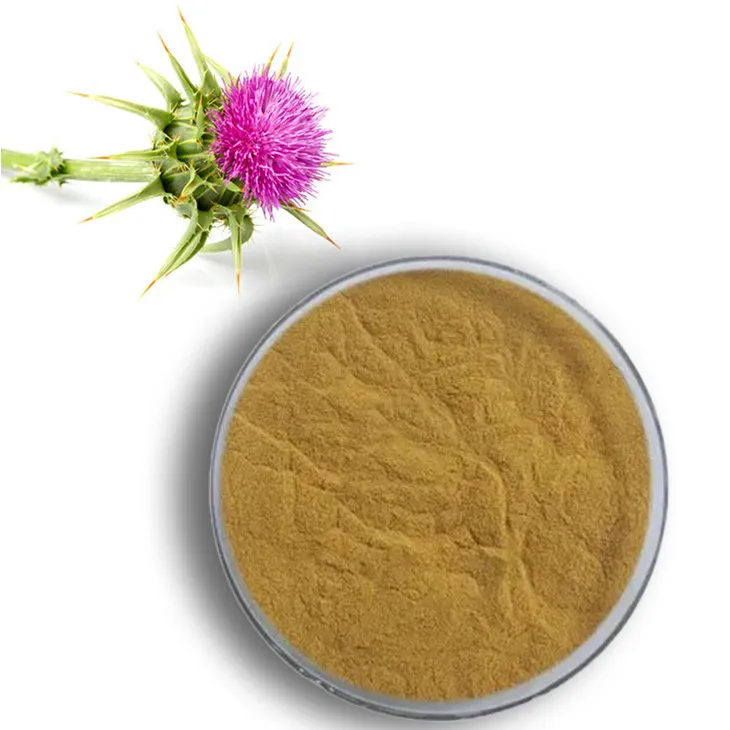- 0086-571-85302990
- sales@greenskybio.com
The Ancient Roots of Pueraria Lobata: Exploring Its Botanical Origin and Traditional Uses
2024-07-03
1. Introduction
Pueraria lobata, commonly known as kudzu, is a plant that has fascinated botanists, herbalists, and cultural enthusiasts for centuries. Its story is one that is deeply intertwined with human history, stretching back to ancient times. This remarkable plant has not only left its mark on the botanical world but has also been an integral part of various cultures, offering a plethora of uses in medicine, cuisine, and more. In this article, we will embark on a journey to explore the botanical origin of Pueraria lobata, tracing its evolution and understanding its natural habitat. Additionally, we will comprehensively investigate its traditional uses across different cultures, shedding light on the multi - faceted significance of this extraordinary plant.
2. Botanical Origin of Pueraria Lobata
2.1. Taxonomy and Classification
Pueraria lobata belongs to the family Fabaceae, which is also known as the legume or pea family. This family is one of the largest and most diverse families of flowering plants. Taxonomically, Pueraria lobata is classified as follows:
- Kingdom: Plantae
- Phylum: Tracheophyta
- Class: Magnoliopsida
- Order: Fabales
- Family: Fabaceae
- Genus: Pueraria
- Species: lobata
Understanding its taxonomic position helps us place it within the broader context of the plant kingdom and provides insights into its evolutionary relationships with other plants.
2.2. Evolutionary History
The evolution of Pueraria lobata can be traced back through geological time. It is believed to have originated in East Asia, specifically in regions such as China, Japan, and Korea. Over time, it has adapted to various environmental conditions, which has contributed to its wide distribution today. Fossil evidence and phylogenetic studies suggest that the genus Pueraria has a long evolutionary history within the Fabaceae family. Its evolution has been shaped by factors such as climate change, geographical isolation, and interactions with other organisms. For example, its ability to form a symbiotic relationship with nitrogen - fixing bacteria in its root nodules has likely been a key factor in its success and evolution. This relationship allows the plant to access nitrogen, an essential nutrient, more efficiently, giving it a competitive edge in nutrient - poor soils.
2.3. Natural Habitat
In its native range, Pueraria lobata is typically found in a variety of habitats. It thrives in areas with well - drained soils, such as slopes, forest edges, and open woodlands. It can tolerate a range of soil types, from loamy to sandy soils, although it generally prefers slightly acidic to neutral soils. The plant is also adapted to different light conditions, being able to grow in both partial shade and full sun. In terms of climate, it is well - suited to temperate and subtropical regions, with moderate rainfall. However, it has shown remarkable adaptability and has been able to colonize new areas outside its native range, sometimes becoming invasive in certain regions, such as in parts of the United States.
3. Traditional Uses of Pueraria Lobata
3.1. Medicinal Uses
Traditional Chinese Medicine (TCM) has a long history of using Pueraria lobata for various medicinal purposes. In TCM, different parts of the plant, including the roots, flowers, and leaves, are utilized.
- For Fever and Headache: The roots of Pueraria lobata are often used to relieve fever and headache. It is believed to have properties that can help reduce inflammation and cool the body. In traditional formulations, it may be combined with other herbs to enhance its effectiveness. For example, it might be used in a decoction along with herbs like mint and chrysanthemum to treat febrile diseases and associated headaches.
- Alleviating Muscle Tension: Pueraria lobata is also used to relax muscles. It has been traditionally prescribed for conditions such as muscle spasms and neck pain. The mechanism behind this may be related to its ability to affect neurotransmitters or its anti - inflammatory effects. Herbalists may prepare ointments or tinctures from the plant for external application on sore muscles or use it in internal remedies for more systemic muscle relaxation.
- Treating Diabetes: Some studies suggest that Pueraria lobata may have potential benefits in managing diabetes. It may help regulate blood sugar levels through various mechanisms, such as improving insulin sensitivity. In traditional medicine, it may be part of herbal formulas aimed at treating diabetes or related metabolic disorders.
- Cardiovascular Health: The plant has also been associated with cardiovascular benefits. It may help lower blood pressure and reduce the risk of heart disease. This could be due to its antioxidant and anti - inflammatory properties, which can help protect blood vessels and improve overall heart function. In traditional use, it may be consumed as a tea or included in herbal mixtures for heart health.
In addition to TCM, other Asian cultures, such as in Japan and Korea, also have their own traditional uses of Pueraria lobata in medicine, often with some similarities and variations based on their local medical knowledge and practices.
3.2. Culinary Uses
Pueraria lobata has also made its mark in the culinary world, especially in Asian cuisines.
- Roots in Cooking: The roots of Pueraria lobata are a common ingredient in many Asian dishes. In China, for example, kudzu root starch is used to make a variety of desserts and snacks. It can be made into a jelly - like substance, which is often served with sweet syrups or fruits. The root starch has a unique texture that adds thickness and a smooth mouthfeel to the dishes. In Japan, kudzu root is sometimes used in traditional kaiseki cuisine, where it may be added to soups or stews to enhance the flavor and texture.
- Flowers in Beverages: The flowers of Pueraria lobata are not only beautiful but also have culinary uses. In some regions, the flowers are used to make tea. The tea made from kudzu flowers has a delicate floral aroma and a slightly sweet taste. It is often consumed for its refreshing qualities and is sometimes believed to have health - promoting properties as well.
4. Cultural Significance
Beyond its practical uses in medicine and cuisine, Pueraria lobata holds cultural significance in many Asian cultures.
- In China, kudzu has been mentioned in ancient literature and poetry. It has been a symbol of vitality and growth, often associated with the beauty of nature. Artists may depict kudzu in paintings, representing the lushness of the natural environment.
- In Japan, the plant has been part of the traditional landscape and gardening. It can be seen in some Japanese gardens, where it adds a touch of natural wildness. The use of kudzu in Japanese cuisine also reflects the cultural connection to the land and the importance of using local ingredients.
- In Korea, Pueraria lobata has been used in traditional folk medicine and cultural festivals. For example, during certain festivals, traditional foods made from kudzu may be prepared and shared, strengthening the community's connection to its cultural heritage.
5. Conclusion
Pueraria lobata is a plant with a rich history and multi - faceted significance. Its botanical origin, traced back to East Asia, reveals its long - standing evolutionary journey and adaptation to different environments. The traditional uses of this plant in medicine, cuisine, and cultural practices across various Asian cultures highlight its importance in human history. While it has been a valuable resource in its native regions, its invasive nature in some non - native areas also serves as a reminder of the complex relationships between plants and their new environments. As we continue to study and explore Pueraria lobata, we gain a deeper understanding of the intricate connections between nature, culture, and human well - being.
FAQ:
What is the natural habitat of Pueraria lobata?
Pueraria lobata is native to East Asia. It can be found in areas such as mountains, slopes, and thickets. It often thrives in well - drained soil and areas with relatively good sunlight conditions.
How has Pueraria lobata evolved over time?
The evolution of Pueraria lobata is a long - term process. Through natural selection, it has developed characteristics suitable for its survival environment. For example, its root system has become well - developed to absorb water and nutrients more effectively. Over time, it has also adapted to different climates and soil conditions in its native regions.
What are the common medical uses of Pueraria lobata in traditional medicine?
In traditional medicine, Pueraria lobata has been used to treat various ailments. It is often used for relieving fevers, as it has certain antipyretic properties. It is also used to treat diarrhea, as it can help regulate the digestive system. Additionally, some traditional medical practices use it to relieve muscle pain and reduce symptoms of hypertension.
How is Pueraria lobata used in cuisine?
Pueraria lobata is used in cuisine in different ways. Its roots can be dried and ground into powder, which can be added to make various pastries or porridges, adding a unique flavor. In some traditional recipes, fresh Pueraria lobata can also be used in soups or stews to enhance the taste and nutritional value of the dishes.
What makes Pueraria lobata a remarkable plant?
Pueraria lobata is remarkable due to its multi - faceted significance. Its long - standing history in traditional uses, both in medicine and cuisine, sets it apart. It has the ability to grow in different environmental conditions, showing its adaptability. Moreover, its unique chemical composition gives it various beneficial properties for human health and the enhancement of food flavors.
Related literature
- Botanical Studies on Pueraria lobata"
- "Traditional Uses of Pueraria lobata in Asian Cultures"
- "The Evolutionary History of Pueraria lobata"
- ▶ Hesperidin
- ▶ Citrus Bioflavonoids
- ▶ Plant Extract
- ▶ lycopene
- ▶ Diosmin
- ▶ Grape seed extract
- ▶ Sea buckthorn Juice Powder
- ▶ Fruit Juice Powder
- ▶ Hops Extract
- ▶ Artichoke Extract
- ▶ Mushroom extract
- ▶ Astaxanthin
- ▶ Green Tea Extract
- ▶ Curcumin
- ▶ Horse Chestnut Extract
- ▶ Other Product
- ▶ Boswellia Serrata Extract
- ▶ Resveratrol
- ▶ Marigold Extract
- ▶ Grape Leaf Extract
- ▶ New Product
- ▶ Aminolevulinic acid
- ▶ Cranberry Extract
- ▶ Red Yeast Rice
- ▶ Red Wine Extract
-
Lemon Extract
2024-07-03
-
Bayberry Extract
2024-07-03
-
Milk Thistle Extract
2024-07-03
-
Curcumin
2024-07-03
-
Citrus Aurantium Extract
2024-07-03
-
Red Date Extract
2024-07-03
-
Lemon Balm Extract
2024-07-03
-
Medicinal Marshmallow Extract
2024-07-03
-
Longan Extract
2024-07-03
-
Dan Shen Root Extract/Salvia Root Extract
2024-07-03





















